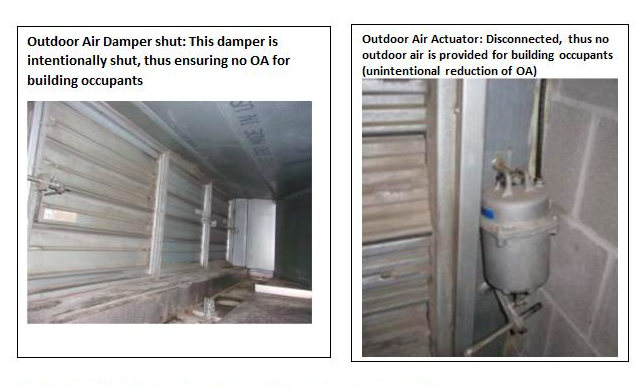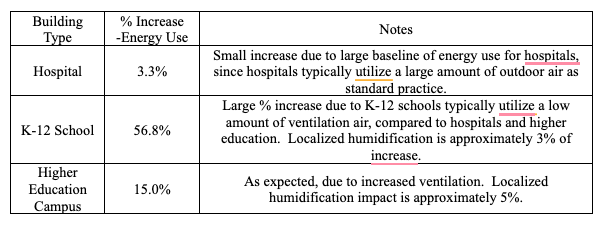A classic example of “The law of unintended consequences”, says Jeremy McDonald
When humans solve one problem, our solution often creates a new problem that we didn’t expect. This observation has been described as “The Law of Unintended Consequences”. I would caution that it’s happening again in the tension between climate change and climate control, or, in another sense, between the outdoor environment and the indoor environment.
In the spring of 2023, Global Warming is front and centre. This March 20, the International Panel on Climate Change (IPCC) released its final Synthesis Report, which indicates previous goals to minimise carbon have not been met. The report calls for increased effort to reduce carbon emissions and energy use.
To keep future carbon goals below the 1.5 degrees C (2.9 degrees F) threshold, which is considered “manageable”, we need to have significant carbon reduction by 2040, reducing our carbon footprint by two-thirds. Maintaining this threshold level of 1.5 degrees C, or below, will require a sizeable reduction in energy use – no easy task, considering carbon- or energy-reduction results have historically fallen short of previously targeted levels.

While the world wrestles with this long-term threat of global warming, I am reminded of March 2020, the recent past, when we all received a quick and brutal education on an existential threat few of us ever considered: A pandemic. The quickly unfolding calamities of spring 2020 showed us how devastating a pandemic can be to human life and society at large.
Sadly, there may be a correlation between the unintended consequences of reducing energy intensity and increasing the intensity of the pandemic. In our zeal to make buildings energy efficient over the last 70 years, we may have inadvertently caused them to be more vulnerable to poor Indoor Air Quality (IAQ). By the 1960s and 1970s, as buildings grew, we transitioned from operable to inoperable windows, which are now the norm for most large buildings. The reason is simple: You’d get knocked over if you left the windows open on the 40th floor. So, we engineered ways to bring fresh air into these buildings through mechanically controlled ducts, and problem solved. But we didn’t stop with skyscrapers. Most modern buildings have inoperable windows now, because it can be more energy efficient – and more economically efficient – to control indoor air… with properly maintained equipment.
You can still pop open a window in a “prewar” (1940s or earlier) building, but we are, in effect, hermetically sealed within our modern indoor spaces. That’s fine, until it isn’t.
The correlation between poor IAQ and COVID-19 case counts
Early in the pandemic, my firm put out an analysis evaluating the correlation between poor IAQ and COVID-19 case counts. As an HVAC practitioner who has observed abysmal IAQ issues over the past 25 years, the conclusion was simple: High-density buildings (nursing homes, multi-family, etc.) with poor IAQ were a clear breeding ground for the virus, thus we should expect the case counts to increase when these environmental conditions exist. Further – and this is critical to understand with regard to meeting the stated carbon targets – HVAC done properly requires energy, a lot of energy. There is a clear correlation with poor IAQ and reduced energy use, which is not how we want to meet our energy reduction targets.

The most common HVAC issues, which can lead to poor IAQ, are as follows:
Energy impact of improved IAQ
In the summer of 2020, Guth DeConzo was retained to perform energy-impact assessments towards improving IAQ for three facilities – a K-12 school, hospital and higher education institution). The intent of the energy-impact was to evaluate the budgetary impacts of adhering to the latest ASHRAE standards, which were instituted in response to the pandemic. The studies looked at the following ASHRAE recommendations:
The overall energy impact (normalised for MMBTU) for each building is shown below:

The wide diversity in the increase in energy use for the improved IAQ can be simply explained that hospitals, in general, utilise a large percentage of outdoor air, while K-12 buildings typically have a smaller baseline. In short, since the baseline is so high for a hospital, increased ventilation doesn’t have a notable effect.
While no one is proposing, at least right now, that the above recommendations be mandated, the magnitude of the increased energy use for improved IAQ should give one pause for consideration. The K-12 increase is reflective of what we can expect to experience in typical office buildings, retail centres, etc. Certainly, if buildings were to be directed to improve IAQ, even a 10-20% increase would make the current carbon target reduction targets that much more difficult.
But it’s worse than that…
A little secret in the HVAC profession, especially in the energy engineering sphere of business, is that too often sub-optimal HVAC systems have reduced energy consumption, because the building owners aren’t paying to maintain or even operate them! If we simply forced building owners to comply with current building code (for buildings with non-operable windows) we can improve IAQ dramatically. However, if we are to have an informed conversation on reasonable reduction of carbon, we need to build this increased energy use into our carbon footprint baseline.
A path forward – reducing carbon while improving IAQ
I believe we can reconcile the carbon reduction challenge with improving IAQ. Meeting the aggressive carbon reduction strategies in front of us is going to require a “greening of the grid” – that is, a turn towards nuclear power, increased hydrogen power and increased renewable power, etc. Simply put, you can’t reach targets of two-thirds energy reduction through energy conservation. The only way to meet such an aggressive target is to electrify buildings, which would be very expensive.
In parallel, we can improve building energy performance while also improving IAQ, which would minimise the strain on the grid. Steps which I recommend, from least expensive to most expensive, are as follows:
While we, as a society, are engaged in a noble challenge to reduce our collective carbon footprint, this is a shortsighted goal if we don’t ensure adequate indoor environments as an equally important goal. We must remember the law of unintended consequences, so that the cure is not worse than the disease.
Jeremy McDonald is a principal of Guth DeConzo Consulting Engineers, in New York. Before the pandemic, he was an adjunct professor at Rensselaer Polytechnic Institute. Recently, he was the technical consultant to the New York State Energy Research and Development Authority in development of an IAQ guideline for Higher Education in NY: “Covid-19 Response Guide, State University of New York”. He may be reached at jmcdonald@guthdeconzo.com.
Copyright © 2006-2025 - CPI Industry. All rights reserved.